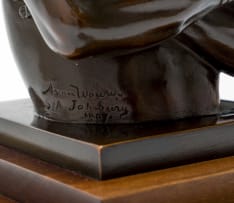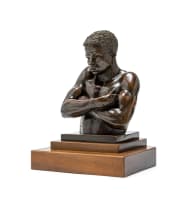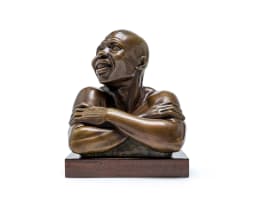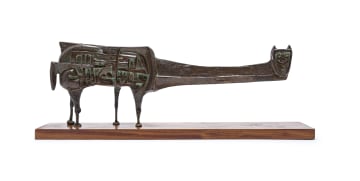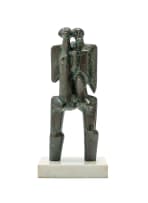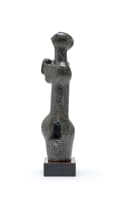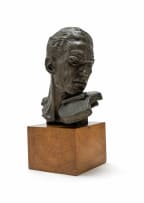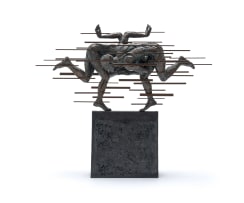Shangaan
Anton van Wouw
Incl. Buyer's Premium & VAT
About this Item
inscribed with the artist's name, '1907', 'Johannesburg' and the foundry mark
Notes
Shangaan was conceived and first modelled in the artist's Doornfontein studio in Johannesburg in 1907. Having recently moved there from Pretoria, and having won the backing of investors to work on what he pleased, Van Wouw enjoyed one of his most creative streaks during that year. Alongside Shangaan, the other famous small-scale works to leave his studio in 1907 included Slegte Nuus, Dagga Roker, Die Noitje van die Onderveld, Mieliepap Eater and The Accused (or The Basuto Witness). Thanks to Van Wouw's powers of observation, the young Shangaan man bristles with defiance. His head tilts forward with a furrowed brow, eyes narrow, lips pursed, arms crossed, and fingers tucked under armpits, exaggerating his biceps. The sculpture is certainly arresting and magnificently rendered, but it also sheds some light on the difficult lives of the then newly urbanised labourers working on the Witwatersrand mines. Remarkably, over 60% of the underground miners were Shangaan migrants, most of them coming from the southern provinces of Mozambique. Another casting of Shangaan, also from the furnaces of Giovanni Nisini in Rome, found its way into the collection of Sir Arthur Conan Doyle, famous writer and Boer War medic.
Literature
ML du Toit. (1933) Suid-Afrikaanse Kunstenaars, Deel 1, Anton van Wouw. Cape Town: Nasionale Pers Bpk, another cast illustrated as plate 15, unpaginated.
Dr Morris J Cohen. (1938) Anton van Wouw: Sculptor of South African Life, Johannesburg, another cast illustrated on page 19.
AE Duffey. (1981) Anton van Wouw 1862-1945 en die Van Wouwhuis, University of Pretoria, number A21, another cast illustrated on page 29.
AE Duffey. (2008) Anton van Wouw: The Smaller Works. Pretoria: Protea Books, another cast illustrated on page 63.


